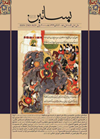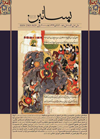Plastination is a scientific process used to preserve the anatomy of a human or animal. In plastination, the water and fat within the body are replaced by plastic, which makes the corpse virtually incapable of decaying. It is a way to maintain and preserve the shape and appearance of the body and the internal organs, which can be very valuable for medical students, among others.
In the plastination process, the body is first embalmed in formaldehyde, then placed in a freezing solution, acetone, which replaces the water in the cells. The body is then submerged in a pool of liquid polymer, such as silicon rubber or polyester. The acetone within the body begins to boil and evaporate, and is replaced by the plastic solution. The plastic can then be cured by UV light, gas, or heat, which will harden the body into a fixed shape.
The plastination technique was developed by Dr. Gunther von Hagens in 1978, who obtained three separate patents for his work with plastination. Initially, plastination was primarily used in medical laboratories and galleries, so that students would have excellent visual examples of the human body’s anatomy. However, in 1993, von Hagens formed the Institution of Plastination in Heidelberg, Germany. With the institute, he held a public showing in Japan of bodies that had undergone plastination. More than three million people attended the event.
This event was a prelude to von Hagens’ next exhibit, Body Worlds. In the Body Worlds Exhibit, carefully preserved skinless corpses are displayed in various positions, many posed as though they are engaging in ordinary activities. Though these models of plastination might appear morbid to some, many people find the exhibit to be a wonderful chance to study the inside of the human body.
Today, plastination is a common technique and an excellent tool for educators. Students in middle schools and high schools are often shown animal organs that have undergone the process of plastination; plastination is also commonly used on animal specimens for veterinary schools. Compared to the “plastic coating” method of the past, specimens that have undergoneplastination are far more realistic and durable. Since von Hagens’ invention, it has proved to be a valuable technique for education and preservation.





































